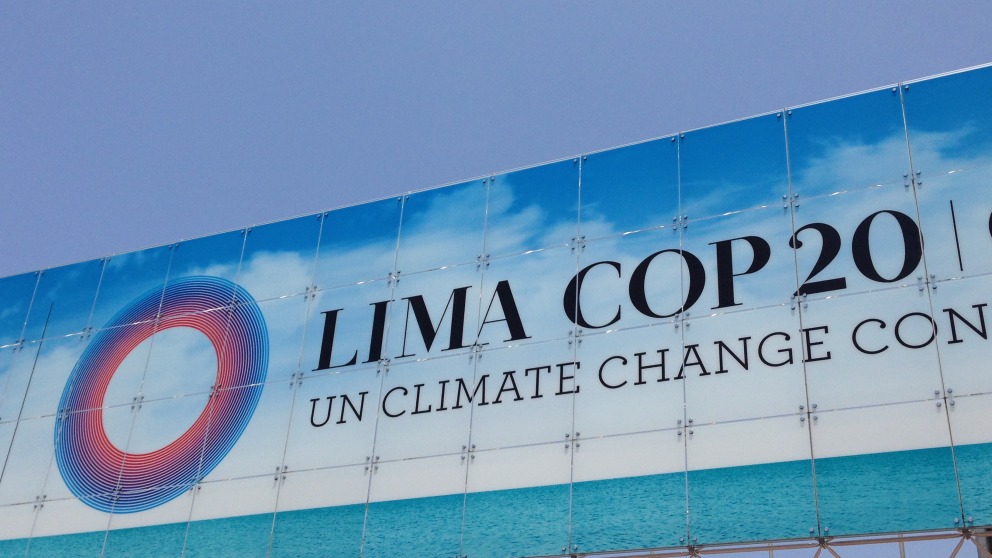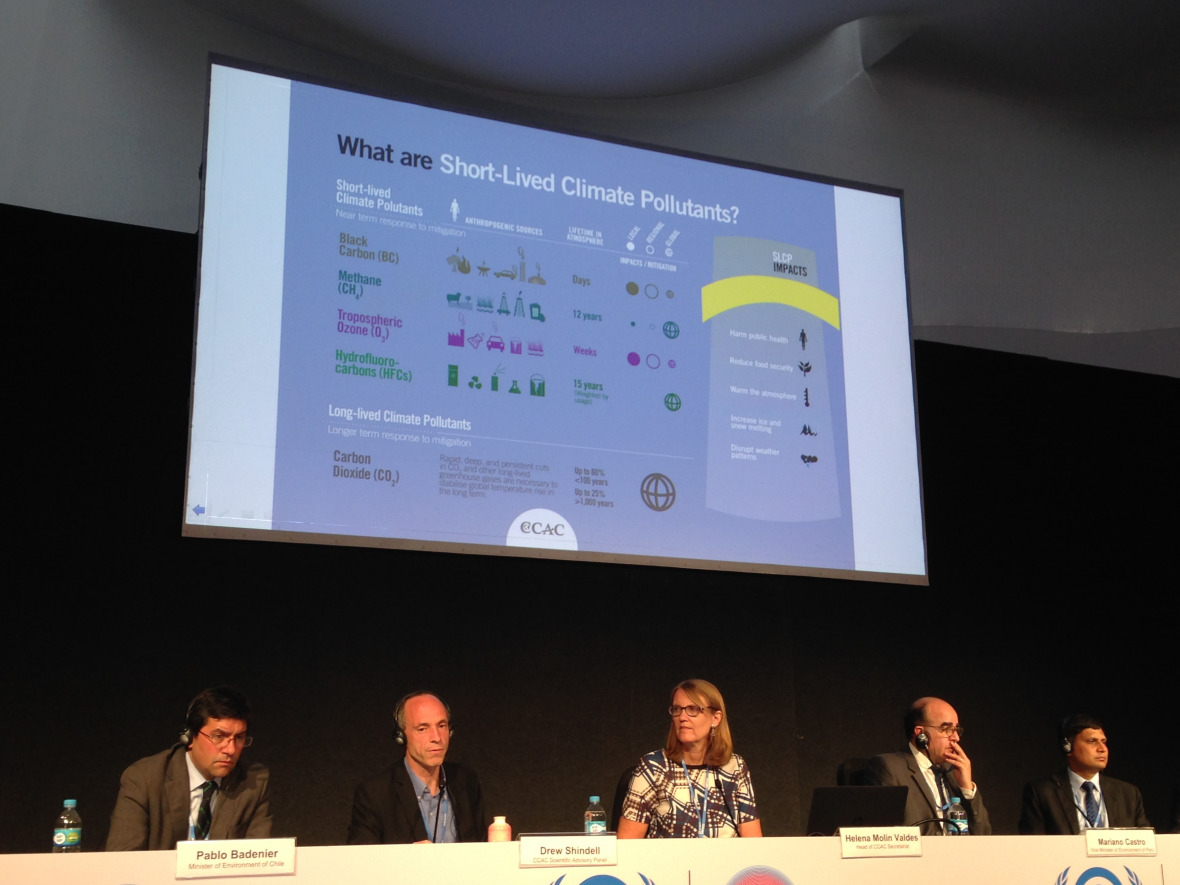Headline:
Less Soot for Health and Climate Protection: IASS Side Events at UN Climate Conference in Lima

Air pollution is a serious problem across the globe. It is responsible for the premature deaths of millions of people each year. Apart from their effects on human health, short-lived climate-forcing pollutants (SLCPs) like soot, ozone, fluorohydrocarbons and methane are also significant drivers of climate change. It is therefore high time to pay more attention to SLCP emissions at the climate negotiations, according to IASS researchers. Together with partners, they organised two side events on this theme at the UN Climate Conference in Lima. On 9 December, representatives from science, politics and civil society discussed emissions from the brick production sector and heavy-duty diesel vehicles, while on 11 December, the collaboration of the Climate and Clean Air Coalition (CCAC), an alliance of state and non-state actors, with researchers was the main item on the agenda. Among other things, this collaboration centres on regional studies and assessments of the development of emissions in Latin America and Asia.

During the first side event, Maheswar Rupakheti from the IASS reported on the findings of his research on the source and extent of air pollution in the Karakorum and the Himalayas and its effects on the bodies of water in the region. “When we talk about climate change, we shouldn’t forget air pollution. There’s poison in the air, and this poison kills”, he stressed. While brick production is one of the main sources of air pollution in the Himalayas, Rupakheti pointed out that the share of pollutants from sources that are difficult to quantify, such as burning waste, is increasing.
Drew Shindell, Chair of the CCAC Science Advisory Panel, stressed that to limit global warming, a drastic reduction in both CO2 and SLCPs was necessary. Recent studies have shown that the concerted and sustained mitigation of SLCPs could prevent many premature deaths. As with every measure to combat climate change, reducing SLCPs was about improving people’s living conditions, but no other pollutants were so significant for the climate problem, Shindell said. “Combating SLCPs in the short term is crucial to tackling climate change.”
The Chilean Minister for the Environment Pablo Badenier reported that while his country has made some progress in the fight against air pollution, it still has to deal with the effects of poor air quality, particularly in large cities. A recent report attributed 4,000 premature deaths in Chile to environmental pollution. Badenier pointed to the carbon tax, which is currently charged at USD 5 per ton in Chile, as an important measure. According to its Deputy Minister for the Environment Mariano Castrano, Peru is also making concerted efforts to reduce SLCPs. For example, together with the Swisscontact foundation, the environmental impact of the brick production sector has been reduced and the sulphur content in diesel brought in line with European standards.
A talk by Gianni López from the Mario Molina Center for Strategic Studies on Energy and Environment in Mexico also focussed on emissions from diesel verhicles. López spoke about international efforts to align standards for heavy-duty diesel vehicles, reduce the sulphur content of diesel, and decommission old fleets of diesel vehicles. He pointed to successful pilot projects with ‘clean’ buses in Montevideo and Lima, which must extend to other regions.
In her introduction to the second side event on the CCAC’s collaboration with researchers, which was organised jointly by the IASS and the CCAC, the Swedish Ambassador for Climate Change Anna Lindstedt called the CCAC a “coalition of the working” because of its efforts to combat SLCPs swiftly and effectively. She underlined, however, that those involved could do a lot more. In her talk on the situation in Latin America, Laura Gallardo Klenner, professor at the University of Chile in Santiago, called for further scientific studies of SLCP emissions in Latin America that give greater consideration to regional differences. Maheswar Rupakheti (IASS) cited various examples from a wide-ranging case study in the Kathmandu Valley and emphasised that the success of this project lay in the inclusion of important stakeholders from the outset. In the subsequent panel discussion, it became clear that while current knowledge is already making measures against SLCP emissions possible, further studies in Asia, Latin America and other regions are required to fill existing data gaps.
For further information, see:
- Dossier on Air Quality and Climate Change
- Research project on air pollution in the Kathmandu Valley (SusKat)
Photos: (c) Birgit Lode/IASS
12.12.2014
